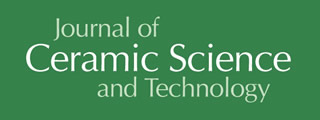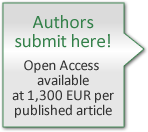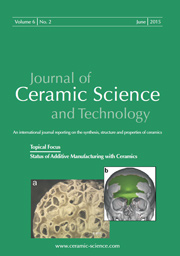Articles
All articles | Recent articles
Optimisation of a Urea Selective Catalytic Reduction System with a Coated Ceramic Mixing Element
M.A. Damm1, M. Sauerborn1, T. Fend2, U. Herrmann1
1 Solar-Institut Jülich (SIJ), FH Aachen University of Applied Sciences
2 Institute for Solar Research, Facilities and Solar Materials
received August 1, 2016, received in revised form October 3, 2016, accepted November 4, 2016
Vol. 8, No. 1, Pages 19-24 DOI: 10.4416/JCST2016-00056
Abstract
The selective catalytic reduction of NOx emissions to H2O and N2 is a major technology in automotive applications for exhaust gas aftertreatment. In this process, the reactant ammonia (NH3) is produced by injecting AdBlue®. With the help of an SCR catalyst, this NH3 reduces emitted NOx to non-toxic nitrogen (N2) and water (H2O). For the homogenization and evaporation of the urea solution, usually metallic mixing elements are used. The new approach uses a mixing element based on structured porous ceramic with an enlarged surface and a special catalytic coating. The Solar-Institut Jülich and the German Aerospace Centre have developed a manufacturing process to modify and optimise the structure of basic polyurethane foams to achieve a high NH3 conversion rate in combination with adjustable backpressure. The optimised flow dynamics of the exhaust gas and the additional special catalytic coating lead to a high-performance mixing element. As a consequence, the size of the conventional SCR catalyst, which is located downstream of the mixer, can be reduced. This leads to cost-efficient and compact exhaust gas aftertreatment. In this paper the experimental results of the performance analysis of this newly designed porous-ceramic-coated mixing element will be presented.
![]() Download Full Article (PDF)
Download Full Article (PDF)
Keywords
Selective catalytic reduction system, selective catalytic reduction catalyst, mixing element, porous ceramic polyurethane foam
References
1 Jean, E., Michelin, J.: Improvement of the Compact Mixing Systems for Optimum SCR-Filter Integration on Passenger Cars, 23rd Aachen Colloquium Automobile and Engine Technology, Aachen, (2014).
2 Gehrlein, J., Lang, A., Palmer, G.: Optimization of SCR systems by integration of mixture elements, MTZ, [03], (2009).
3 De Rudder, K.: Tier 4 high efficiency SCR for agricultural applications, SAE 2012 – 01 – 1087, (2012).
4 Koebel, M., Elsner, Kleemann, M.: Urea-SCR: a promising technique to reduce NOx emissions from automotive diesel engines, Catal. Today, 59, [3 – 4], 335 – 345, (2000).
5 Zheng, G., Palmer, G., Salanta G., Kotrba, A.: Mixer development for urea SCR application, SAE, 2009 – 01 – 2879, (2009).
6 Zueco, S.C., Halbei, J., Neumann, F., Oesterle, J.J., Rudelt, J.: Urea SCR system in focus - new challenges in the development of exhaust systems, MTZ, [09], (2007).
7 Bunar, F., Schirmer, S., Hansen, K.F., Hartland, J.: High performance diesel NOx-aftertreatment concept for future worldwide requirements, 23rd Aachen Colloquium Automobile and Engine Technology, Aachen, (2014).
8 Dimopoulos, P., Bach, C., Vogt, U., Herrmann, K.: Ceramic foams as catalyst substrate: Pre-catalyst application homogenizing the exhaust flow upstream of aftertreatment devices, SAE Paper, 2007 – 24 – 0097, (2007).
9 Zygourakis, K.: Transient operation of monolithic catalytic converters: A two-dimensional reactor model and the effects of radially nonuniform flow distribution, Chem. Eng. Sci., 44, [9]. 2075 – 2086, (1989).
10 Binner, J.: Ceramic Foams, in: Scheffler, M. and Colombo, P. (Eds.): Cellular ceramics: structure, manufacturing, properties and applications, Wiley-VCH Verlag GmbH & Co. KgaA, Weinheim, (2005).
11 Schwartzwalder, K., Somers, A.V.: Method of Making Porous Ceramic Articles. U.S Patent Application, US 3090094 (1963).
12 Becker, M., Hoffschmidt, B., Meurer, J.: Gas exhaust system. World Intellectual Property Organization Patent Application, WO PCT/EP98/05022 (2001).
13 Becker, M., Hoffschmidt, B., Meurer, J.: Exhaust gas system. German Patent Application, DE19814585A1, (1999).
14 Hoffschmidt, B.: Porous member with penetrating channels for fluid flow there through and a method of producing the member. World Intellectual Property Organization Patent Application, WO PCT/EP98/05024 (2002).
15 Hoffschmidt, B., Vaessen, C., Holzheid, F., Gonsior, D.: Efficient SCR system using an innovative static mixer, TIBKAT, (2009).
16 Vedula, V.R., Green, D.J., Hellman, J.R.: Thermal shock resistance in ceramic foams, J. Am. Ceram. Soc., 82, [3], 649 – 656, (2005).
17 Fend, T., Pitz-Paal, R., Reutter, O.: Convective heat transfer investigations in porous materials, International Conference Porous Ceramic Materials, Brügge, (2005).
18 Fend, T.: Unpublished data from the Institute of Solar Research, German Aerospace Center (DLR), Germany, (2014).
Copyright
Göller Verlag GmbH


